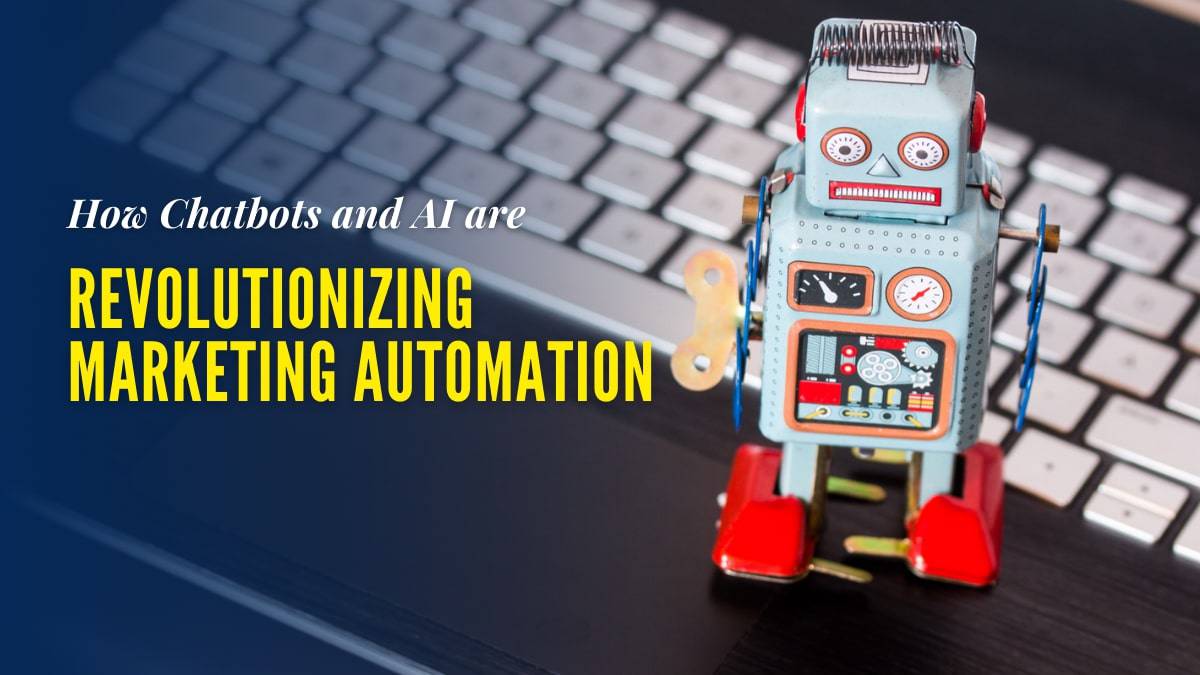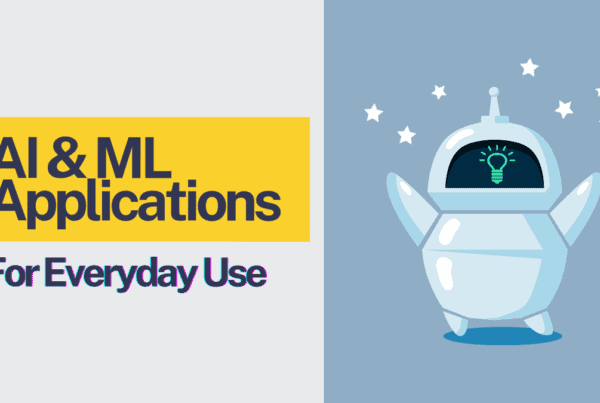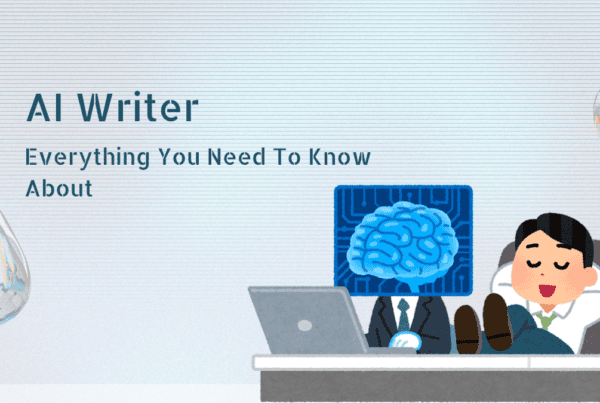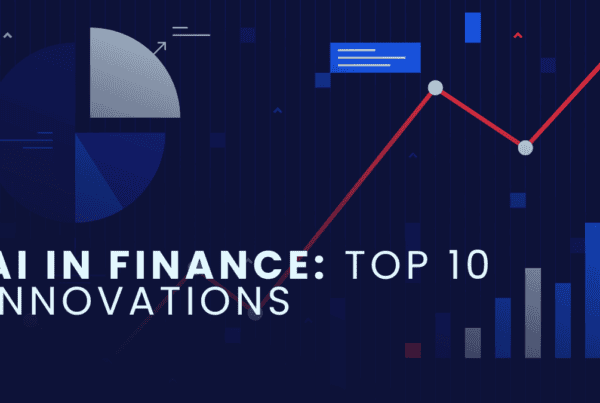
Have you interacted with chatbots before? Maybe you have. Businesses nowadays use chatbots for different tasks, especially for helping their customers. Many financial businesses have chatbots on their apps and websites. Alexa and Google Assistant are chatbots and even your phone can be a chatbot for you.
Over 1.4 billion people interact with chatbots every month. Chatbots are growing quickly and they are not bad to use. To understand chatbots, think of having a tool that can talk to your audience and solve their general problems. Now imagine smart tools that not only interact with users but also do marketing for your business using Artificial Intelligence and machine learning.
In this article, we’ll explore why chatbots are a game-changer in the world of marketing automation and AI. But before that, let’s get to know Chatbots first.
What are Chatbots?
Chatbots are programs that talk to people through text or voice. Chatbots can help customers in many ways, such as giving quick answers, being always available, and making things personal. Chatbots can also help businesses save money, work faster, and make customers happy.
A recent Juniper’s Research study says that chatbots can help some businesses like banks and hospitals save time and money. The report says that chatbots can answer questions faster and cheaper than humans. Chatbots can save up to four minutes and 50-70 cents for each question.
There are different kinds of chatbots, depending on how they are made and how they communicate to people. Some chatbots use rules and words to reply, while others use AI to understand and respond to people. AI chatbots can also learn from people and analyze data to get better responses over time.
Chatbots’ Working Process
Chatbots are programs that talk to people through text or voice. They can do different things for people, such as:
- Virtual assistants, like Alexa or Google Assistant, can play music, remind people of things, buy things, or control smart devices.
- Customer service chatbots, like Watson Assistant, can answer questions, give information, or solve problems for customers, such as making appointments, checking money, or tracking orders.
- Entertainment chatbots, like Kuki formally known as Mitsuku, can chat with people for fun, play games, tell jokes, or create interesting stories.
Below is a real-life example of how chatbots work:
- A user wants to order a pizza from a restaurant that has a chatbot on its website or app.
- The user types or says “I want to order a pizza” to the chatbot.
- The chatbot uses natural language processing (NLP) to analyze the user’s message and extract the user’s intent (order a pizza) and any relevant information (such as size, toppings, or delivery address).
- The chatbot uses machine learning (ML) to learn from previous data and feedback and generate a relevant and personalized response for the user. For example, the chatbot may say “Sure, what size do you want?” or “We have a special offer for you today, would you like to try it?”.
- The chatbot uses deep learning (DL) to handle complex and diverse data sets and perform advanced tasks, such as recognizing the user’s voice, analyzing the user’s emotions, or summarizing the user’s order.
- The chatbot and the user have a back-and-forth conversation until the chatbot confirms the user’s order and payment details, and thanks the user for choosing the restaurant.
How Chatbots can Enhance Marketing Automation?
Marketing automation means using software like Brevo, Hubspot, Omniscient, etc to automatically manage and execute marketing tasks. Instead of doing things manually, like sending emails or tracking social media posts, the software handles these tasks for you based on set rules and triggers.This helps businesses save time, reach more people, and ensure that their marketing is consistent and efficient.
For example, you can set up an automated email to be sent when someone signs up for a newsletter or schedule social media posts to go live at specific times.
![[your-subject] - EyeUniversal Marketing Automation](https://www.eyeuniversal.com/wp-content/uploads/2024/07/Marketing-Automation-1024x664.jpg)
Chatbots can work with marketing automation software and tools, such as HubSpot, Mailchimp, or Salesforce, to give a smooth and personal experience for customers on different apps and stages of buying.
Chatbots can help with marketing tasks, such as:
Lead Generation
Chatbots can get and check leads by asking questions, getting contact details, and giving rewards, such as lower prices, free trials, or ebooks. Chatbots can also send leads to humans when needed or book meetings or demos for them.
![[your-subject] - EyeUniversal Chatgpt Lead Generation](https://www.eyeuniversal.com/wp-content/uploads/2024/07/image-28.png)
Here is how it works:
The chatbot either begins chatting with visitors or responds to their questions. It asks preset questions to collect details like contact info, budget, and needs. It ensures the answers are accurate and flags anything that might need a human’s review. It uses natural language
processing to understand what the lead’s responses mean. Based on the answers, the chatbot can score and categorize leads, or provide the info for sales teams to do it. It records and saves the data so human agents can follow up with qualified leads.
Lead Nurturing
Chatbots can keep in touch with leads and give them helpful information, such as what the product can do, what others say about it, how it works for others or common questions. Chatbots can also send messages that match the lead’s actions, likes, and dislikes, such as leaving the cart, visiting the website, or clicking the email.
Customer Segmentation
Chatbots can group customers based on their details, thoughts, or actions, such as age, gender, place, money, personality, needs, goals, or buying history. Chatbots can also make groups that change automatically based on the customer’s actions or feedback.
- Drift Chatbot: This chatbot asks potential customers about their business goals and assigns them to specific customer service or sales agents based on their responses. This is an example of behavioral segmentation, where the chatbot is grouping customers based on their actions (i.e., their responses to the chatbot’s questions).
- HubSpot Chatbot: HubSpot uses a chatbot for live customer service chat, where customers can start communicating with a chatbot to resolve routine service issues. If a customer asks about pricing packages, the chatbot identifies them as a warm lead and suggests that the user complete an order. This is an example of needs-based segmentation, where the chatbot is grouping customers based on their needs (i.e., their interest in pricing packages).
These examples illustrate how chatbots can use different types of customer information (such as their actions or needs) to segment them into different groups, allowing for more personalized and effective customer service.
Email Marketing
Chatbots can make and send emails that are personal and useful to customers based on their groups, such as welcome emails, news, offers, or surveys.
![[your-subject] - EyeUniversal Email Marketing](https://www.eyeuniversal.com/wp-content/uploads/2024/07/image-29.png)
This can be done using APIs or automation platforms like Zapier. Here’s an example of how a chatbot can automate email sending:
- Chatbot Interaction: The chatbot interacts with the user and collects necessary information. This could be a customer’s email address, the subject of the email, and the message content.
- Email Automation: Once the chatbot has collected the necessary information, it can use an email service’s API to send the email. For example, if the chatbot is integrated with Gmail, it could use the Gmail API to send an email on behalf of the business.
- Email Sending: The chatbot sends a request to the email service’s API with the necessary information (recipient’s email address, subject, and message content). The email service then sends the email to the recipient.
For example, a chatbot named ChatBot, when paired with Zapier, can send emails for new ChatBot messages. This means whenever a new message is received by the chatbot, an email is automatically sent to a specified email address.
This can be particularly useful for businesses that want to keep track of customer inquiries or for customer service teams that need to respond to customer messages promptly.
Measure Email Campaigns
Chatbots can also see and measure how well the email campaigns are doing, such as how many people open, click, or buy.
![[your-subject] - EyeUniversal Measure Email Campaign](https://www.eyeuniversal.com/wp-content/uploads/2024/07/image-30.png)
For example, Tidio Chatbot offers built-in dashboards where you can monitor chatbot interactions and other conversational analytics that are updated in real-time. These metrics include KPIs like the number of successful interactions or leads your chatbot generates. They help you make changes to your chatbot and continue improving it with time.
In the context of email campaigns, a chatbot could track the number of visitors who left their email addresses or other contact information during their conversation with your chatbot (for example, via chatbot-based newsletter signups). This data can then be used to measure the success of your email campaigns.
Advantages and Challenges of Using Chatbots for Marketing Automation
According to Gartner reports, most companies will use chatbots to converse with their customers. By 2025, the chatbot market will be worth around US$1.25 billion. By 2027, the amount of money made from chatbots will be around US$454.8 million. Thus this industry will grow at a rapid pace. However, to seize all the opportunities we all need to be aware of the positive and negative sides of using them for marketing purposes.
The good about chatbots include:
- Chatbots can give fast and always-on service to customers, which can make customers happier and more loyal.
- These can talk to many customers and answer many questions at the same time, which can make the work easier and cheaper for humans.
- These bots can learn from customer data and feedback, which can make them more accurate and useful over time.
- Chatbots can make marketing messages more friendly and interesting, making customers more trusting and loyal.
The cons of chatbots include:
- Chatbots may not be able to deal with hard or unclear situations, which may need human help or action.
- These bots may not be able to understand the situation or feelings of customers, which may affect the quality and tone of the talk.
- Chatbots may have technical or security problems, such as errors, crashes, or hacking, which may affect how the chatbot works and how reliable it is.
- These may have ethical or legal problems, such as privacy, permission, or rules, which may affect how people see the chatbot and the business.
How can Chatbots Leverage Artificial Intelligence?
Artificial intelligence (AI) is making machines or systems that can do things that usually need human intelligence, such as thinking, learning, deciding, or using language. AI can be used for chatbots to make them smarter, faster, and more flexible to user wants and needs.
Chatbots can use natural language processing (NLP), machine learning (ML), and deep learning (DL) to understand and talk to users. NLP is the part of AI that lets chatbots read, write, and speak natural language, such as text or voice.
ML is the part of AI that lets chatbots learn from data and feedback and improve over time. DL is the part of AI that uses complicated networks to let chatbots handle big and different data sets and do advanced things, such as recognizing images, analyzing feelings, or summarizing text.
Some examples of how chatbots can use artificial intelligence to provide personalized, relevant, and engaging experiences for users are:
- Personalization: Chatbots can use AI to change their conversations and suggestions based on the person’s details, actions, likes, and dislikes. For example, a chatbot can use NLP to get the person’s name, place, or mood from the conversation, and use ML to learn the person’s likes, dislikes, or goals. Then, the chatbot can use DL to make personal content, such as pictures, videos, or music, that fit the person’s taste and mood.
- Relevance: These can use AI to give the best and most helpful information or answers to the person’s questions or problems. For example, a chatbot can use NLP to know the person’s purpose and situation from the conversation, and use ML to find and rank the best sources or choices from a big and changing database. Then, the chatbot can use DL to make a short and clear summary and presentation of the best information or answers to the person.
- Engagement: These bots can use AI to make the talk more friendly and interactive for the person, and keep them interested and happy. For example, a chatbot can use NLP to make natural and human-like conversations and use ML to change the person’s feedback and feelings. Then, the chatbot can use DL to add some creativity and humor to the talk, such as jokes, stories, or games, that can amuse and please the person.
Opportunities and limitations of using AI for Chatbots
The opportunities of using artificial intelligence for chatbots are:
- AI can help chatbots do more things and deal with different situations, which can make them more useful and powerful.
- It can help chatbots give more correct and helpful exchanges and answers, which can make the conversation of higher quality and more accurate.
- It can help chatbots make conversations more personal and amusing for people, making them more trusted and engaged.
The limitations of using artificial intelligence for chatbots are:
- AI may need a lot of data to teach and keep chatbots up to date, which can make them more expensive and hard to use.
- It may have some problems with ethics and society, such as privacy, fairness, or responsibility, which can affect how people see chatbots and their owners.
- AI may not be able to be like human intelligence and feelings completely, which may limit how well chatbots can talk to people.
Everything in a Nutshell
Chatbots are great tools for strategically using marketing automation and AI. They can make marketing easier and better by:
- Saving time and money: Chatbots can talk to many people and answer many questions at once, which can make the work faster and cheaper for humans.
- Improving quality and reliability: Chatbots can learn from what people say and do via AI, and give more accurate and useful answers, thus making them more dependable for users.
- Enhancing trust and loyalty: Chatbots can make marketing messages more friendly and interesting, and create more personal discussions with people, making them more liked and trusted.
Chatbots are a great tool for strategically using marketing automation and AI because they can help businesses reach more customers, provide better service, and increase sales.
To end, as businesses use more automation and AI, using chatbots for marketing is a smart move. They can talk to customers well and give useful data for making good decisions. Chatbots, coupled with AI, are one of the new tools of marketing, and they are here to help as they learn and get better over time.



